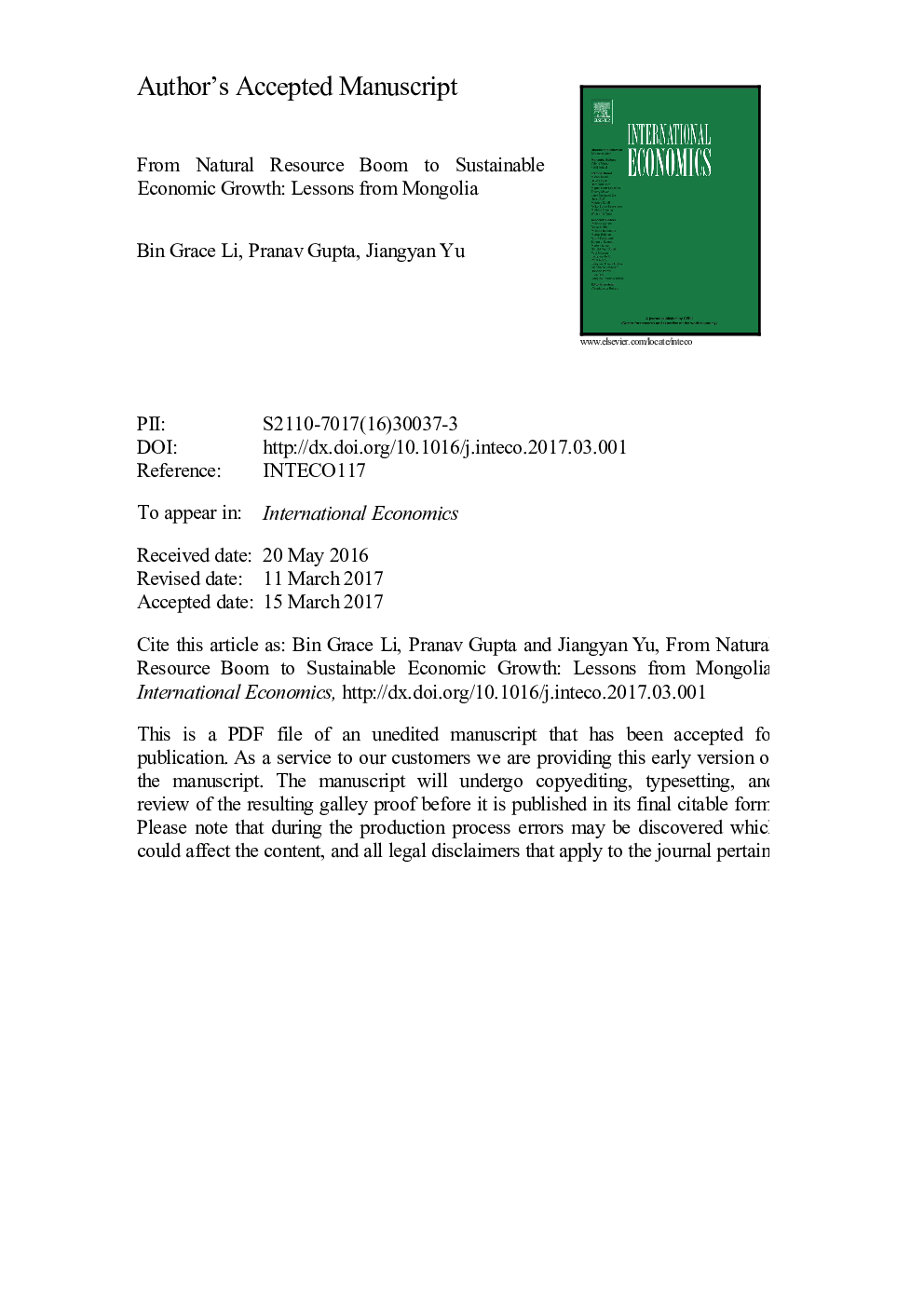| Article ID | Journal | Published Year | Pages | File Type |
|---|---|---|---|---|
| 5106272 | International Economics | 2017 | 39 Pages |
Abstract
Many resource-rich developing countries are in the process of harnessing immense mining resources towards inclusive growth and prosperity. The often-large infrastructure gap in developing countries calls for public investment to unlock the long-term growth potential. This paper utilizes a structural model-based approach to analyze the macroeconomic impacts of different public investment strategies on key fiscal and growth variables. We apply the model to one of the resource-rich developing countries -- Mongolia. We find that, although scaling up public investment could provide a boost to growth, too rapid fiscal outlays will push the economy to its limit of absorptive capacity and increase macroeconomic vulnerabilities. Prudent fiscal policy, particularly moderating infrastructure investment and optimizing investment efficiency, is essential to maintain economic stability, as well as to boost the long-term sustainable growth for developing countries like Mongolia.
Related Topics
Social Sciences and Humanities
Economics, Econometrics and Finance
Economics, Econometrics and Finance (General)
Authors
Bin Grace Li, Pranav Gupta, Jiangyan Yu,
